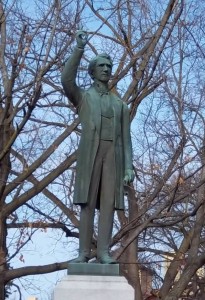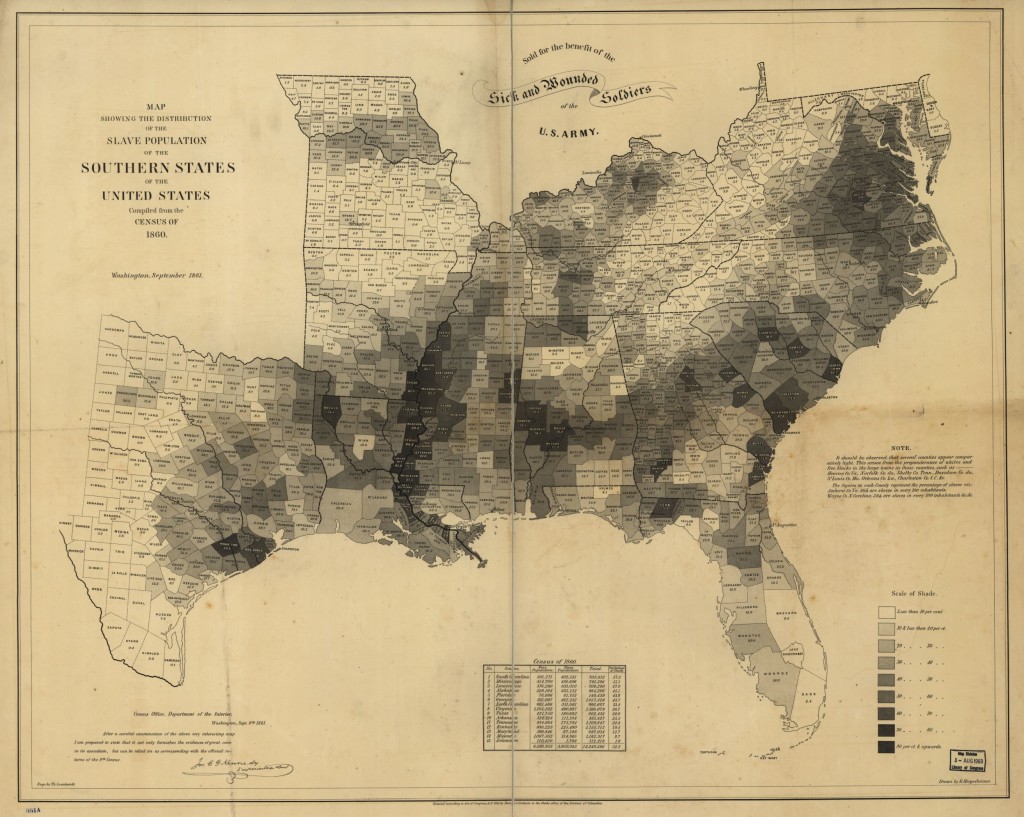As has been well-documented, William H. Seward did not think the United States Constitution was the most important law in the country. Especially in the context of determining whether slavery should be eradicated, he believed there was “a higher law than the Constitution, which regulates our authority over the domain, and devotes it to the same noble purposes.”
However, 150 years ago Secretary of State Seward certified that even the U.S. Constitution officially abolished slavery throughout the nation. From The New-York Times December 19, 1865:
THE CONSUMMATION!; Slavery Forever Dead in the United States. Official Proclamation of the Great Fact. Secretary Seward Announces the Ratification of the Constitutional Amendment. Twenty-seven States Declared for Universal Freedom. No Human Bondage After Dec. 18, 1865.THE PROGRESS OF RECONSTRUCTION. Withdrawal of Military Government in Alabama. PROCLAMATION. WILLIAM H. SEWARD, SECRETARY OF STATE OF THE UNITED STATES, ARTICLE XIII.
To All to Whom these Presents May Come, Greeting,
Know ye, that, whereas, the Congress of the United States, on the 1st of February last, passed a resolution, which is in the words following, namely:
“A resolution submitting to the Legislatures of the several States a proposition to amend the Constitution of the United States:
Resolved, By the Senate and House of Representatives of the United States of America, in Congress assembled, two-thirds of both Houses concurring, that the following article be proposed to the Legislatures of the several States as an amendment to the Constitution of the United States, which, when ratified by three-fourths of said Legislatures, shall be valid to all intents and purposes as a part of said Constitution, namely:
SECTION 1. Neither slavery nor involuntary servitude, except as a punishment for crime whereof the party shall have been duty convicted, shall exist within the United States or any place subject to their jurisdiction.
SEC. 2. Congress shall have power to enforce this article by appropriate legislation.
And, whereas, it appears from official documents on file in this department that the Amendment to the Constitution of the United States proposed as aforesaid, has been ratified by the Legislatures of the States of Illinois, Rhode Island, Michigan, Maryland, New-York, West Virginia, Maine, Kansas, Massachusetts, Pennsylvania, Virginia, Ohio, Missouri, Nevada, Indiana, Louisiana, Minnesota, Wisconsin, Vermont, Tennessee, Arkansas, Connecticut, New-Hampshire, South Carolina, Alabama, North Carolina and Georgia, in all twenty-seven States;
And whereas, the whole number of States in the United States is thirty-six;
And whereas, the before specially named States, whose Legislatures have ratified the said proposed amendment, constitute three-fourths of the whole number of States in the United States;
Now, therefore, be it known that I, WILLIAM H. SEWARD, Secretary of State of the United States, by virtue and in pursuance of the second section of the act of Congress approved the 20th of April, 1818, entitled “An Act to provide for the publication of the laws of the United States and for other purposes,” do hereby certify that the amendment aforesaid HAS BECOME VALID TO ALL INTENTS AND PURPOSES AS A PART OF THE CONSTITUTION OF THE UNITED STATES.
In testimony whereof, I have hereunto set my hand and caused the seal of the Department of State to be affixed. Done at the City of Washington, this 18th day of December, in the year of our Lord 1865, and of the Independence of the United States of America the 90th. WM.H. SEWARD,
Secretary of State.
According to Walter Stahr, Mr. Seward actually did believe that the adoption of the Thirteenth Amendment helped put a period to an American sentence:
On December 18, Seward certified that a sufficient number of states had ratified the Thirteenth Amendment, the amendment abolishing slavery, so that it was now part of the Constitution. Twenty-seven out of thirty-six states had approved, Seward noted, counting all the southern states in his calculation, including those whose representatives were not yet admitted to Congress. One could question whether these were legitimate states for this purpose, but Seward did not; he believed the executive branch could form its own views on whether to recognize a state government, as it had during the Civil War in the cases of West Virginia, Louisiana, and other states. “It was with especial gratification,” [Secretary Seward’s son] Frederick later recalled, that his father “affixed his name to this crowning and closing act of the long struggle.” Frederick’s language here reflected his father’s views: Seward believed that, with the adoption of the Thirteenth Amendment and the formation of new southern state governments, the process of Reconstruction was almost complete. The radicals believed the struggle had only begun.[1]
How much does what is written in the Constitution really matter? Mr. Seward believed there was a higher law. Charles Evans Hughes apparently thought what mattered was how some folks read the written word:
We are under a Constitution, but the Constitution is what the judges say it is, and the judiciary is the safeguard of our property and our liberty and our property under the Constitution.
Well, that’s reassuring.
You can see the Seward statue in this post near the Seward House in Auburn, New York. The map showing slave density by county based on the 1860 census can be found at the Library of Congress
- [1]Stahr, Walter Seward: Lincoln’s Indispensable Man. 2012. New York: Simon & Schuster Paperbacks, 2013. Print. page 452.↩



